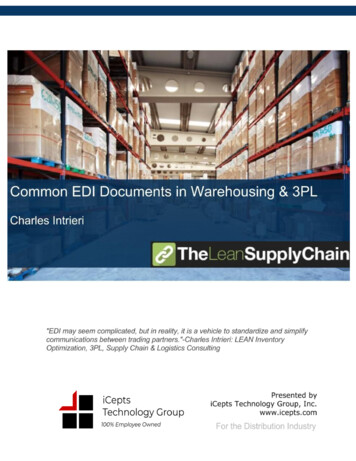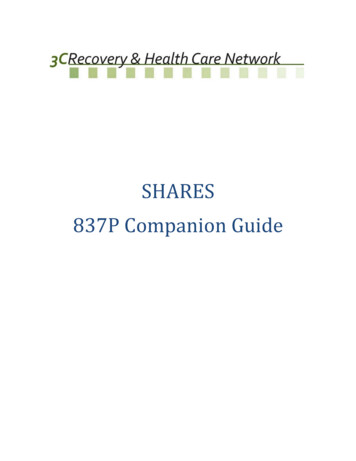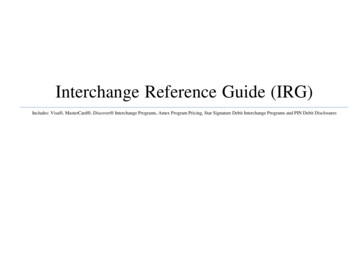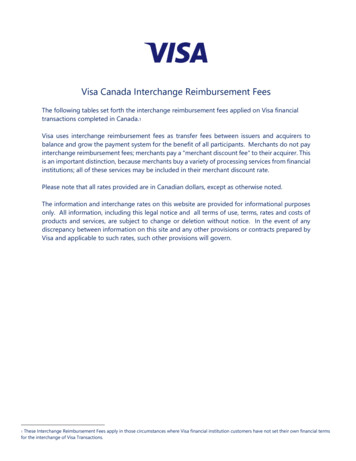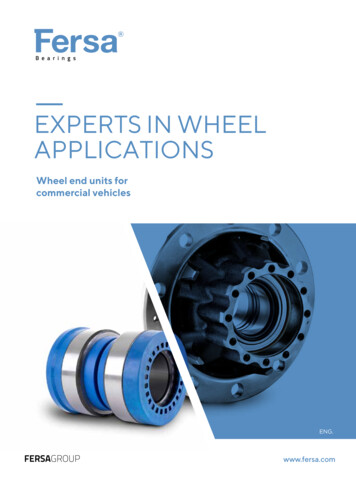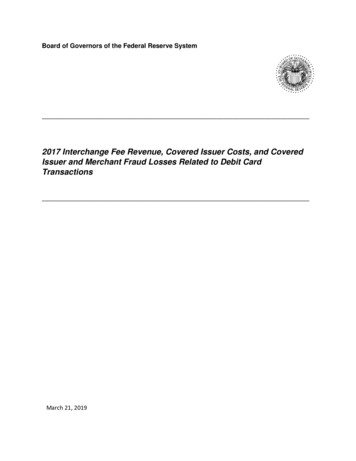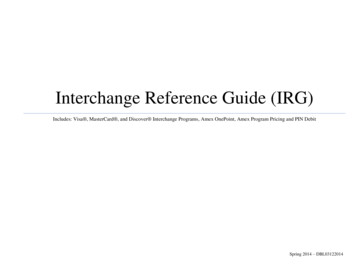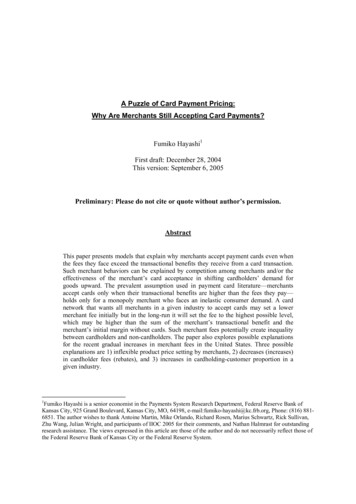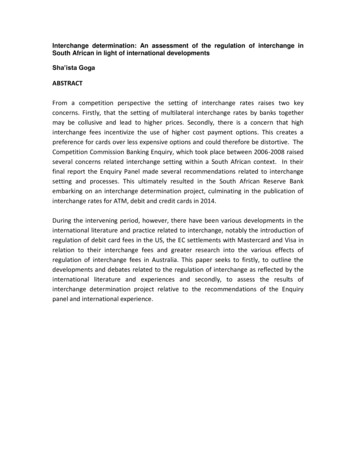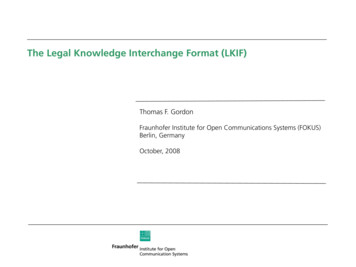
Transcription
The Legal Knowledge Interchange Format (LKIF)Thomas F. GordonFraunhofer Institute for Open Communications Systems (FOKUS)Berlin, GermanyOctober, 2008
ESTRELLANetherlandsUniversity of AmsterdamRuleWiseU.K.University of LiverpoolHaley Europe Ltd.Interaction Design Ltd.GermanyFraunhofer FokusKnowledgeTools Int.Bundesministerium der FinanzenItalyUniversity of BolognaSOGEI Societa Generale d'InformaticaCNIPA Centro Nazionale per l'Informatica nella PubblicaAmministrazioneMinistero dell'Economia e delle FinanzeConsorzio Pisa Ricerche SCARLHungaryAPEH Tax and Financial ControlAdministrationCorvinus University of Budapest
Motivation Increasingcomplexity and quantity of legislation and regulations, reflecting thecomplexity of modern technology and a global economy Bureaucracyby 50%. Legitimacycosts for small and medium size companies currently reduce their profitsand credibility of government endangered by the increasing difficulty ofcitizens and businesses to understand their legal rights and obligations
The Role of Legal Knowledge Systems (LKS) Legalknowledge systems (LKS) are the key technology for managing the complexityof legislation LKSenable new online e-government services requiring the application of complexlegislation (tax benefits, social security administration, ) LKScan give citizens and businesses immediate access to a personalized andtransparent assessment of their rights and obligations.
LKS Dissemination Problem – Need for Standards AlthoughLKS have a proven track record Publicadministrations are understandably reluctant to invest heavily in closed,proprietary solutions. Thefurther acceptance and dissemination of legal knowledge technology is severelyhampered by the lack of an open, standard interchange format for legal knowledgebases.
ESTRELLA's Solution: The Legal Knowledge Interchange Format Builds Isupon World-Wide Web standards (XML, RDF, OWL, )defined as an XML schema LKIFdocuments are XML documents which are instances of this schema Includesa reusable OWL ontology of basic legal concepts
LKIF Stack, Builds on the “Semantic Web”
Modeling Ontologies In computer science, an “ontology” is an advanced kind of entity-relationship datamodel. Ontologies enable standardized terminology. Ontologies can help to reduce the complexity of legislation, by facilitating the reuse ofconcepts Ontologies in LKIF are modeled using the Web Ontology Language (OWL), a WorldWide Web standard. Many high-quality software tools exist for developing and using OWL ontologies.
The LKIF Ontology of Basic Legal Concepts
Axiomatization of Theories in LKIF A theory is an infinite set of propositions Theories are axiomatized by a language, a set of axioms and a set of inference rules. Language – a set of predicate symbols, can be declared using an OWL ontology Axioms – well-formed formulas of propositional or predicate logic Inference rules – are defeasible in LKIF
Legal Rules are Modeled as Inference Rules in LKIF Rules are “reified” objects with properties, e.g. date of enactment Rules are subject to exceptions Rules can conflict Some conflicts can be resolved using rules about rule priorities, e.g. lex superior Rules can be excluded from being applicable by other rules
Example LKIF Rules
Modeling Legal Argument Legal reasoning is not only deduction from rules and facts: Input: rules, facts Output: legal assessment (e.g. liable, guilty, entitled) Rather, legal reasoning is in general a modeling process [Fiedler, 1985] Input: issue or claim Output: theory of rules and facts, arguments, legal assessment
General moral principals and judgments about themorality of specific acts are constructed together, inan iterative process of mutual adaptation[Rawls, 1951]
One’s attention must shift back and forth (“Hin- undHerwandern des Blickes” ) between the evidence andlegal sources when trying to subsume facts underlegal terms.[Engisch, 1960]
Legal reasoning is not primarily deductive, but rathera modeling process of shaping an understanding ofthe facts, based on evidence, and an interpretation ofthe legal sources, to construct a theory for some legalconclusion.[Bing, 1982]
“There can be no final and exhaustive definitions ofconcepts, even in science. We can only redefineand refine our concepts to meet the new situationswhen they arise.”[Hart, 1983]
“The task essentially includes the choice, shaping andlogical construction of the appropriate legal rules aswell as the pertinent statements of facts in mutualinterdependence. . The process is not reduced to theapplication of deductive logic to given premises, butessentially consists in constructing a logical fabric.”[Fiedler, 1985]
“Legal reasoning is a form of theory construction. A judge rendering a decision is constructing a theoryof [the law and facts of] a case. A lawyer’s job isto construct a theory of the case too, and one thatjust happens to coincide with his client’s interests.”[McCarty, 1997]
Defendant drove a vehiclethrough the park.Vehicles are forbidden inthe park.SubsumptionDefendant pushed ababy carriage throughthe park.Witness testimonyLegal code section
Validation of LKIF – Pilot Applications ItalianLegislative Decree No 48 of April, 18, 2005, implementing EU Directive2003/48/EC. Hungarian EuropeanVAT tax legislationDirective 90/434/EEC, the ”Merger Directive”.
Validation of LKIF – Translators RuleWise. UML classes OWL concepts Haley Rules LKIF rules KnowledgeTools LKIF arguments AlexGold LKIF rules
LKIF Reference Inference Engine – Carneades Carneades provides tools supporting a variety of legal reasoning and argumentationtasks, including: argument construction from defeasible rules, precedent cases, ontologies and testimonial evidence argument evaluation, applying proof standards and respecting the distribution of the burden of proof argument mapping and visualization Carneades supports all of LKIF Ontologies – Description Logic Programming subset of OWL Rules Arguments Case-based Reasoning – Bench-Capon and Wyner's reconstruction HYPO and CATO Carneades is Open Source Available at http://carneades.berlios.de
Future Work Further pilot applications Better documentation (user manual, tutorials, etc.) Graphical user interfaces: desktop application and web application Further dissemination activities (user group, ) Standardization (DIN, CEN, ?)
Conclusions LKIF is a rich interchange format for legal knowledge systems LKIF is an open, non-proprietary format, free for anyone to use LKIF builds on World-Wide Web standards LKIF consolidates the state-of-the-art of over 20 years of AI and Law research No commercial system yet supports all of LKIF or provides comparable expressiveness Carneades is a free, open source inference engine for LKIF Further work is needed to promote, document and standardize LKIF
Discussion
Modeling Ontologies In computer science, an "ontology" is an advanced kind of entity-relationship data model. Ontologies enable standardized terminology. Ontologies can help to reduce the complexity of legislation, by facilitating the reuse of concepts Ontologies in LKIF are modeled using the Web Ontology Language (OWL), a World- Wide Web standard.


